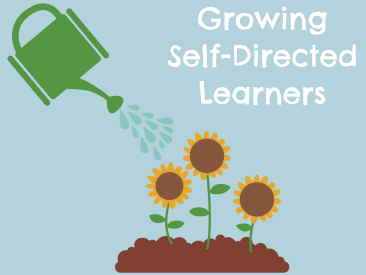Self-Directed Learning

Suddenly, unexpectedly, parents find themselves working from home while also converting to online teaching and tutoring. My Facebook Newsfeed teems with joke memes about the struggles with this process and some earnest advice to parents that formal learning is not necessarily a priority under these unprecedented conditions.
While I whole heartedly agree that safe guarding children and young people’s physical and mental well being is currently, as always, our primary responsibility as care givers and educators, my experience – prior and recent – affirms that learning and the associated sense of achievement is a major contributing factor to a person’s sense of well being. However, like many others, you may be struggling with motivating your child to consistently engage in learning activities or finding that the work set by school is insufficient due to lack of challenge or interest. This may be particularly pertinent to the students transitioning from Primary to Secondary and GCSEs to A-Levels.
To which, I propose a solution: Self Directed Learning – giving students the freedom to choose: the knowledge and skills they gain, the methods they use to learn, and how they present the outcomes of their learning.
The simplest way of doing this is to ask the student: “What would you like to learn about or learn to do (today)?” and to set them literacy and numeracy tasks to consolidate their learning. Given the choice, one of my KS2/3 students picked “hedgehogs” as his research topic. I developed his research questions with him and set him the task of presenting 5 Scientific Facts in full sentences (with correct grammar, spelling and punctuation). The result was an excellent written and verbal presentation and some vocabulary finds that will never have arisen in the course of every day school learning. For a less able or more easily distracted student more guidance on sources of information may be required.
For many higher ability students, this will actually result in a choice to extend their knowledge of a given topic beyond the limits set by the curriculum or learn subjects they can’t at school. Free from having to support a scheme of work set by a school, a 13 year old student who enjoys Mathematics, has progressed onto GCSE Algebra within weeks because I kept nurturing her need for greater challenge. A 15 year old, predicted high grades and not seeing the point in continuing to do KS4 work in his GCSE subjects, chose to circle back to History and Economics which he hadn’t been able to choose as GCSE subjects.
Given the choice, many, perhaps most, students will opt to develop a skill: making, baking, sewing etc. which opens up a wide range of “learning by doing” activities, especially practical applications of Maths. For example, physically making a 3D box out of card is the simplest way to recognise the shape map for one; making half or third or double the quantity of a given recipe requires working out fractions or multiples in a range of units. Most ‘making activities’ require the use of measuring implements and methods of measuring and can, for example, teach a student how to draw a straight line (not as easy as people think!) or a circle simpler than verbal or visual teaching.
When learning is fostered through the topics and activities a student loves, the educator’s main task is simply to ensure that the learning is consolidated in some format and the skills and knowledge demonstrated are appropriate to their Key Stage (if relevant). This is where engaging with a tutor can be particularly helpful. An end product to the process is essential as it focuses the studying and serves as a physical reminder of the process and the knowledge and skills gained. And when it is a result of their choices, in my experience, the students set themselves standards higher than most educators would and frequently meet them.
Samea teaches various subjects across different age ranges. To book a lesson with her, or one of our other excellent tutors, please call us on 020 3198 8006, email us at he***@**************co.uk, or complete the form on the ‘Contact Us’ page.